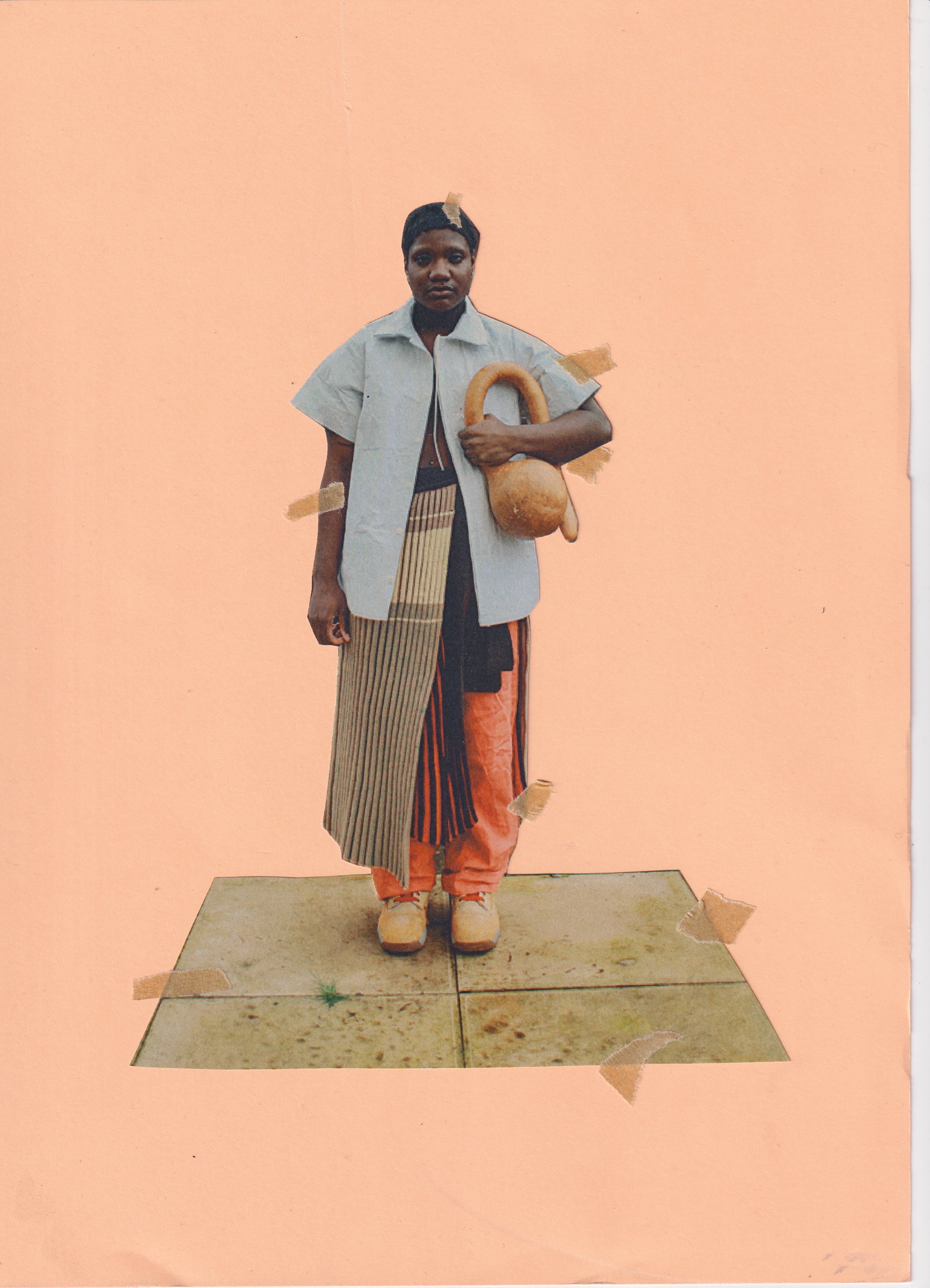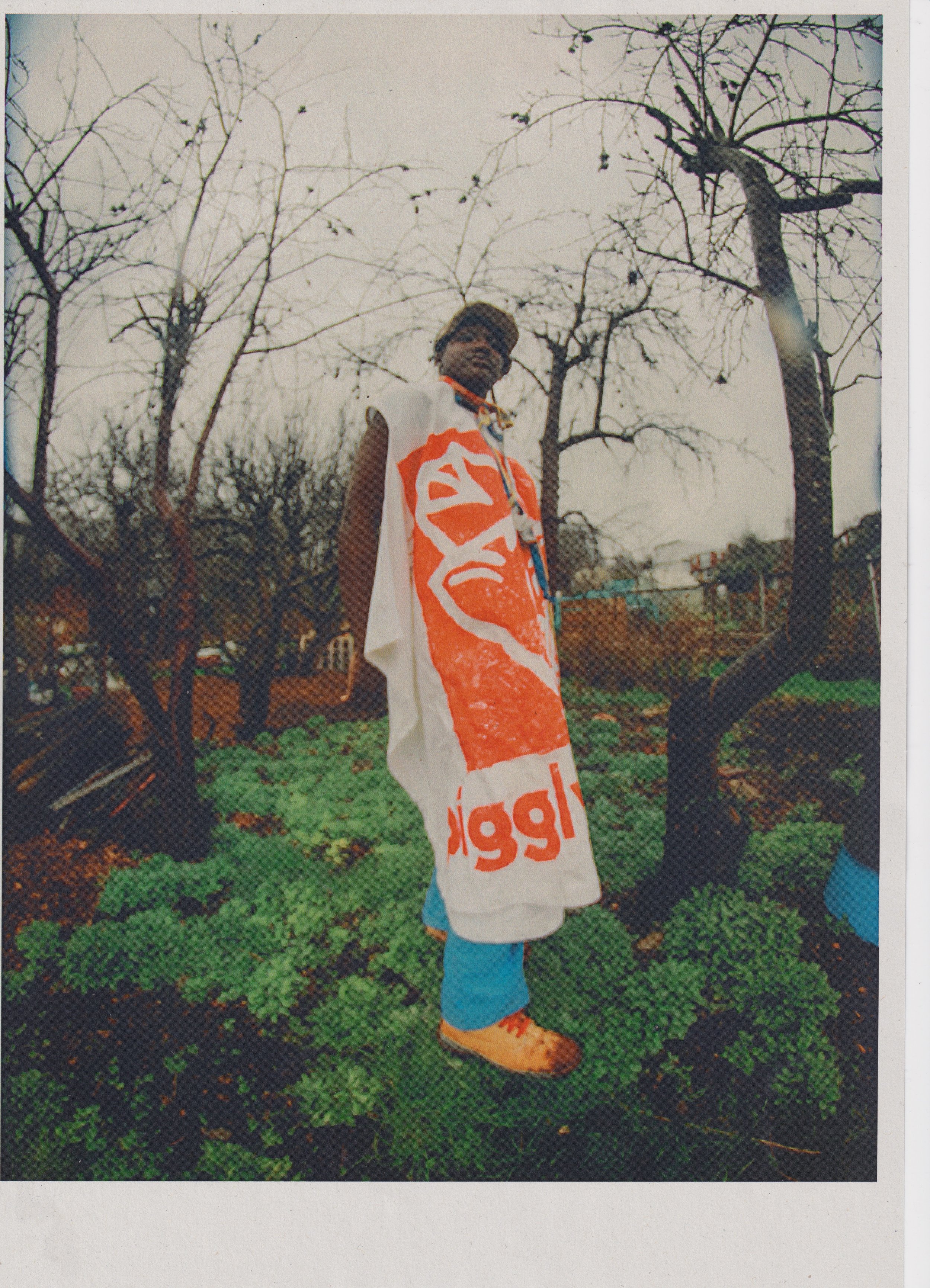Talent Talks: Julia Sue Dotson
Julia Sue Dotson draws from their forgotten family histories and queer identity, rooted in the American South. Inspired by their ‘butch lesbian great-cousin Clara’, they deconstructed 1950s American menswear, reworking traditional textiles and gender roles into contemporary garments. They celebrate queer resilience and break down gender stereotypes in labor roles through dress, materiality, and tongue-in cheek wordplay, set against an agricultural working backdrop.
Photo by Jenna Jones | Model: Tomique Gibson
Could you please introduce yourself?
I am originally from Charleston, South Carolina, USA and I’ve lived in the UK for both my BA and MA degrees at Central Saint Martins. I grew up learning how to sew from the grandma’s home economics sewing lessons and all of my knowledge spiraled from there.
My working practice comes from the essential relationship between the object and its maker; how every handmade item is intrinsic to the story of the person crafting it.
Currently I work as a textile consultant and am researcher in how craft serves as a vehicle to form rural queer communities.
Photo by Jenna Jones | Model: Tomique Gibson
Having graduated recently, how do you look back on your studies?
Having gone through all of the different fashion departments at Central Saint Martins, it feels weird to leave such a tight knit system. I was very fortunate to find a really incredible community and friends with the core being the institution, but it can have a cult-like mentality thats hard to break. Obviously education is such a privilege and I’m very lucky to have had time to purely make and study , which I do miss at points. However, there are aspects of the institution I would like to be a part of changing.
Mainly moving away from the single talent mindset and creating more collective creative community when it comes to making. Open sourced knowledge in fashion is essential for survival and I think more teaching needs to understand that, along with sustainably methodology.
Photo by Jenna Jones | Model: Tomique Gibson
Could you please tell us something about your graduation collection/project?
The starting point for my MA graduate collection came from my great cousin Clara Howell, who was described as a “gender bender” in 1960s Alabama. She (for lack of a better understanding of Clara’s own identity politics and pronouns) was a butch lesbian who I learned about from my other cousin who keeps in depth records of our family genealogy. Within the process of learning how to be more intuitive to my creative / making intuition, I took a speculative approach to Clara’s narrative with the idea of documenting queer history and how the act of it is lost in the paper media of , say a photograph or written text.
So that, plus the narrative of the American South’s agricultural history and grocery store bags is this big metaphor for Clara’s life. Aprons and white button-downs act as my own projection of how someone is supposed to have a limited wardrobe that's altered and changes with time. Breaking down gender stereotypes in labor roles through dress.
Photo by Jenna Jones | Model: Tomique Gibson
Which materials, techniques, programmes and/or applications are you mostly interested in?
Truly I am obsessed with paper and secondhand linens. They’re the most perfect base to exist on their own or to manipulate. I use printmaking either through stitches or hand or screen printing are my means of communicating effectively.
Very simply, I consider myself more of a textile designer that sits within fashion and education more than a fashion fashion designer. Altering as a means of “non design” and using preexisting objects with mending is the most important aspect of my practice.
Photo by Jenna Jones | Model: Tomique Gibson
The exhibition you are a part of looks into meaning of regeneration. What does regeneration mean to you and your work?
To answer the question I did look into the dictionary for the very definition of the word. A spiritual renewal or a restoration of the body after an injury. I would like to think my work takes existing remnants of the past and mends the mistakes we’ve made. Restoring physical tablecloths made with the label of “womens work” under patriarchal bias and reconfigure with new purpose.
A renewal of the material by a queer wearer without the cultural bias of living in a city (metronormativity) and taking symbols of late capitalist gain and screwing it on its head. Paper remolded out of the bin and fixed to make a hat, etc etc, etc.
So with my practice, I hope to educate, and physically use materials of the 20th century as a small step to fix gendered bias in labor and the resulting waste of that misstep.
Photo by Jenna Jones | Model: Tomique Gibson
How do you perceive the meaning and importance of community within the fashion field?
I may have touched on this earlier, but community is essential, not important. Who are we without those we surround ourselves with? We don’t exist alone and how are designers expected to work as a single entity? What is the point of withholding information (techniques, contacts etc) when it would benefit a whole system of people instead of just one individual ?
Personally, I am very proud to think I’m a part of a generation that has communal thinking as a core value because we’ve what late capitalist competition has done to both the industry and our ecosystem. Slowly but surely, I think that toxic stereotype is changing.
How do you view the future of fashion? And your own role therein?
Expanding on the earlier question, I’m very hopeful that it's moving towards more collaborative thinking and working and putting more sustainable practices into place.
I would like to think I’m one to not keep the old and outdated stereotypes of late hours, work from no pay and backwards views on body perception in practice and outwardly speak up against them when needed.
Equally important to making a good work environment, I hope that I can help other designers and companies have sustainability be the first approach in their design process. From either a waste management consultant or how to consider other bodies in the fit of clothing I want there to be an ease in fashion where there seems not to be. I’m also in the mindset of not needing to scale up my practice. Made to order speciality and bringing back “homemaking “ modes of dressing and creating are what I’d like to bring back into normality but in the context of all the waste we’ve created. Slowing down the making process and making every object, whether that be clothing or a cup, more precious.
Photo by Jenna Jones | Model: Tomique Gibson







